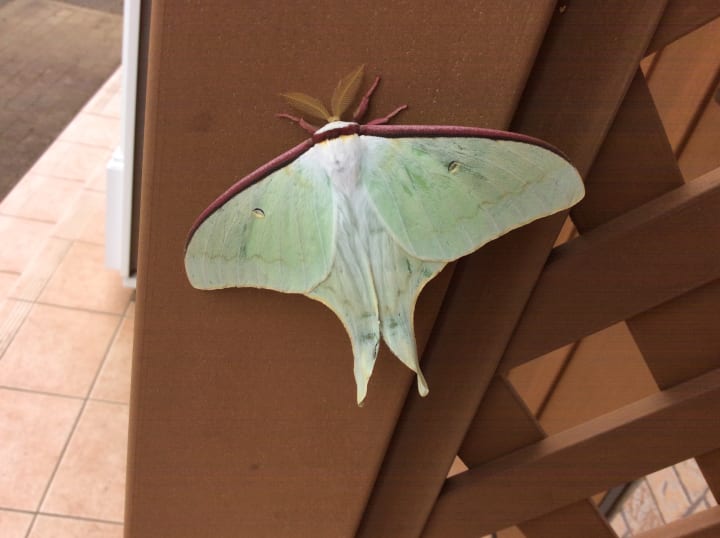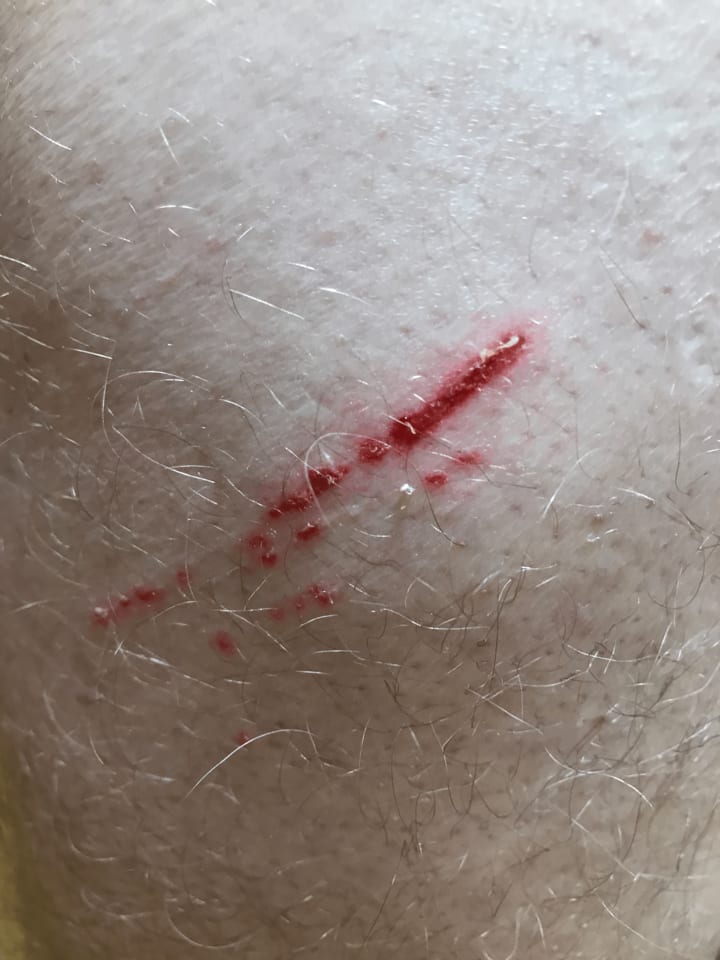The Wild Life On Your Door Step
This one is a pussycat despite its lethal look

When I first saw the title of this challenge 'Capture the Wild' I was quite attracted to the theme. The only problem was that I lived very far from any notable wild life, or at least I thought I did. One thing I have come to realise is that no matter where you live, there is always some form of notable wildlife a lot closer than you think, like right on your doorstep or even inside your house. In my case I even had a close encounter in my bed!
First of all let me show you what I have seen on my small porch in semi-rural Japan.The Japanese Rhinoceros Beetle above is quite common around these parts where we live and is harmless enough to be bought as a pet for young children. It looks quite ferocious, rhinoceros like armament, which despite its innocuous reputation, still scares the hell out of me. It looks it fell out of the Ugly tree and hit every branch on the way down. The Lunar Moth below is also a benign being, but one which does somewhat better in the looks department.

The Lunar Moth is not a rare species, but they are rarely seen due to them being nocturnally active and having a lifespan of just seven to ten days. And, given that its normal habitat is mainly in North America and Canada, I guess the one posted out on my porch is what they call a rogue visitor. Our guest above spent a day and a half in the position you see it in. It did not move an inch in all that time. I did take the trouble to see if it represented any danger to me or my wife and it came up negative. In the end I quite liked the idea of having such a big (up to seven inch wingspan) insect on my doorpost as a decorative focal point. Of course, not all the insect life around these parts is quite so harmless.
I have saved the scariest living thing I have ever come across in close quarters, a thing which sadly I never got to photograph. Twice I have been attacked by this insect which has more than left its mark on my innocent fair skin. The insect in question is called a Rove Beetle or Nairobi Fly, or Praederus to give its technical name, and believe me you do not want to get too close to this toxic little devil. Below is a photograph my wife took with my smart phone in the early morning after a nocturnal assault under the bedsheets.

All I remember was feeling something light moving across the top of my leg. I sleepily lowered my right hand to brush off whatever it was and almost immediately felt a burning sensation and leapt out of bed. We couldn't find the little blighter, but we did some research on the wound it had caused me and there it was in full duo-colour.

So the Rove Beetle is one to be very wary of, which I now know from bitter experience. The injury pictured above takes about three or more weeks to disappear, and for a large part of that time it remains very sore and tender.'Capture the wildlife'? I think this time it might be more appropriate to call it 'Captured by the Wildlife.'
I did wonder of course how on earth such a nasty, toxic mite ever got into my pyjamas and could only think that it did so when my wife left my night attire to dry out on our small balcony just off our bedroom. So, as a more than warranted precaution, these days we give all of our clean washing a good flick into the outside air just in case. My final thought on the matter was that I had had a lucky escape. The idea the it could so easily got into my underpants and left its injurious mark somewhere delicate in the extreme sent a small shiver down my spine.
About the Creator
Adam Evanson
I Am...whatever you make of me.
Enjoyed the story? Support the Creator.
Subscribe for free to receive all their stories in your feed. You could also pledge your support or give them a one-off tip, letting them know you appreciate their work.






Comments
There are no comments for this story
Be the first to respond and start the conversation.